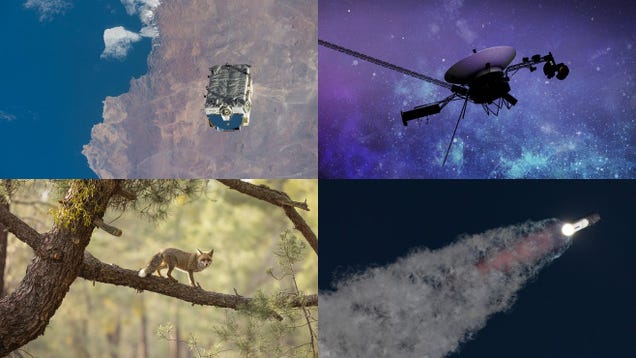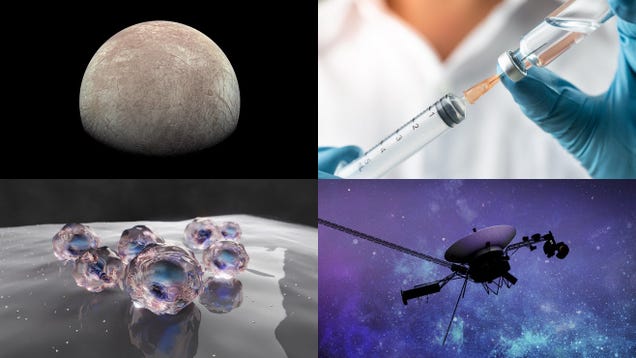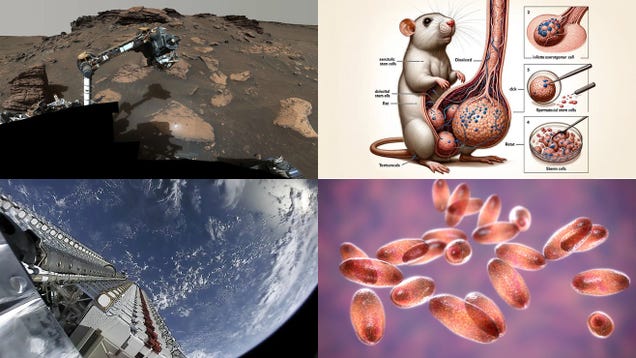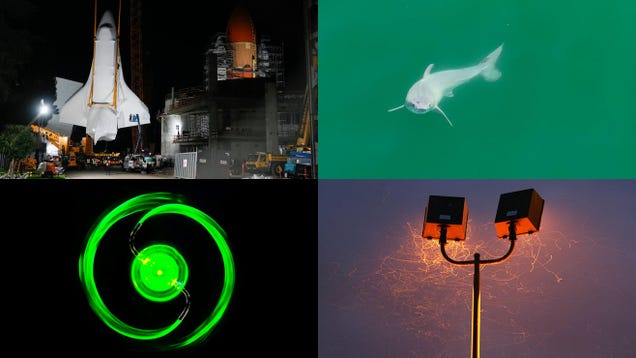
Your favorite childhood toy is probably gone. Maybe your parents threw it out. Maybe you broke it yourself.

Your favorite childhood toy is probably gone. Maybe your parents threw it out. Maybe you broke it yourself.

Stratolaunch flew its Talon-A hypersonic vehicle for the first time after dropping it out of the belly of Roc, an utterly massive aircraft with a 385-foot wingspan. Meanwhile, SpaceX flew its Starship for the third time in a test that pushed the limits of the megarocket. Catch up on these and other top science stories…

Pondering the scale of the cosmos can feel as if you’re peering over the edge of the brink; it can be daunting enough to make you want to flee to the comforts of working, commuting, and other quotidian endeavors.

In our top science stories this week, data from NASA’s Juno spacecraft helped scientists calculate how much oxygen is being produced on the intriguing Jovian moon Europa (enough for a million humans to breathe a day, according to the study). Back on Earth, a German man got 217 covid-19 shots and is apparently doing…

In our top science stories this week: Writer Ed Cara looks back at the terrifying prion disease known as Mad Cow; researchers discover seamounts taller than the Burj Khalifa; and the journal that published a horrifying diagram of ‘rat dck’ explains what went wrong. —Rose Pastore

Things were looking good for Intuitive Machines’ Odysseus lunar lander, which made a soft touchdown on the Moon on Thursday and became the first American lunar lander since Apollo in 1972. But on Friday evening, NASA and the private Houston-based company reported that Odie appeared to have landed askew and may be…

In our top science stories this week, SpaceX must deorbit 100 Starlink satellites due to a flaw; a person in Oregon caught the bubonic plague from their pet cat; and the Perseverance rover’s SHERLOC instrument is on the fritz. Oh, and a grotesque AI interpretation of rat genitalia somehow made it past peer review.

The 46-year-old Voyager 1 spacecraft is on the fritz again, and this time it may be critical. As one engineer said, “this is, by far, the most serious since I’ve been project manager.” Here are our top science stories from this week.

This week, we saw the first-ever image of a newborn great white shark; scientists figured out what’s really happening when insects fly around artificial lights; and mathematicians reversed the sprinkler. Click through for our top science stories of the week.